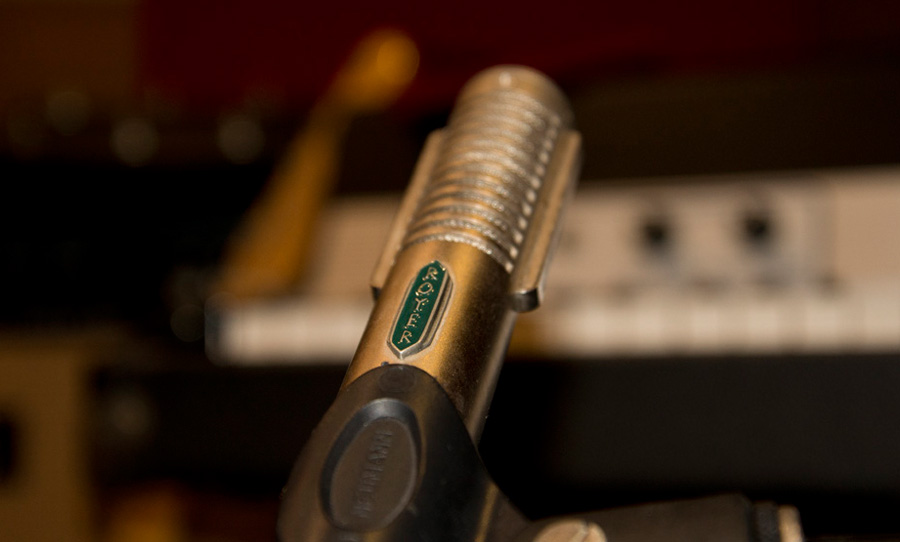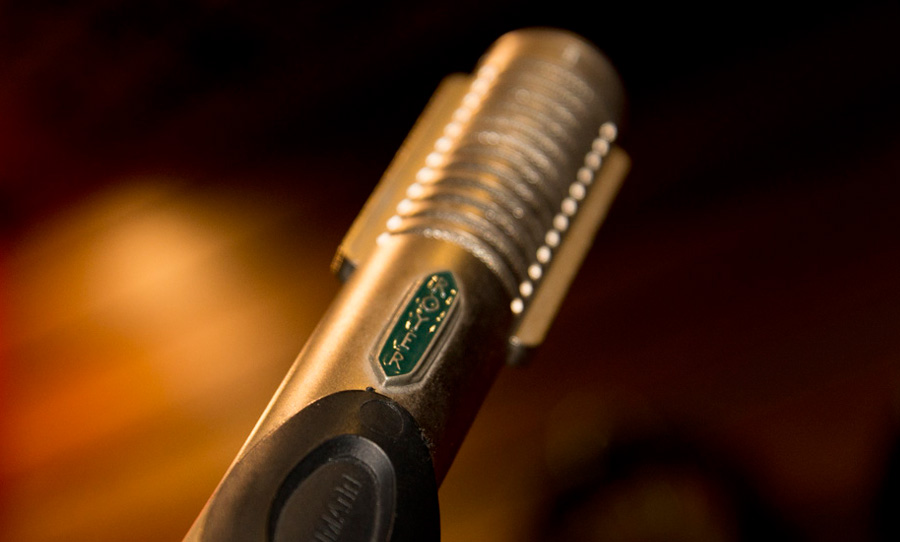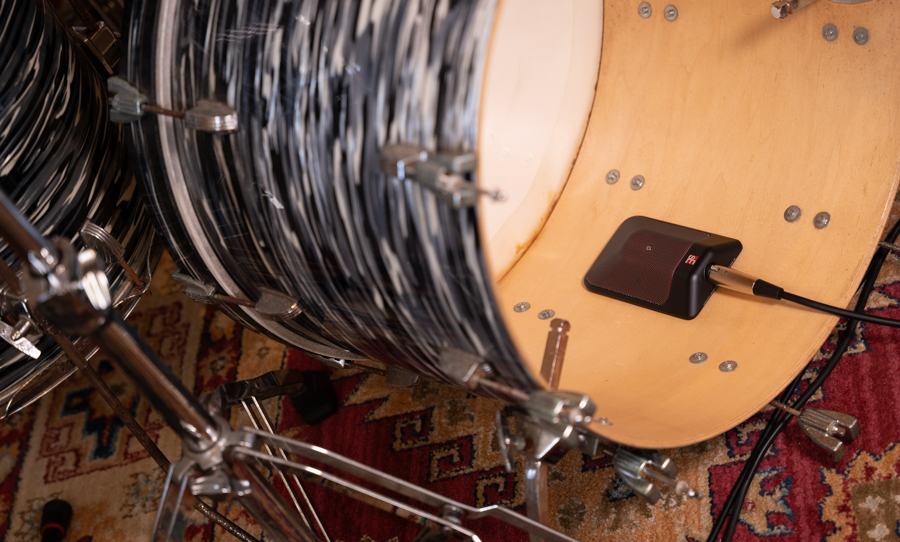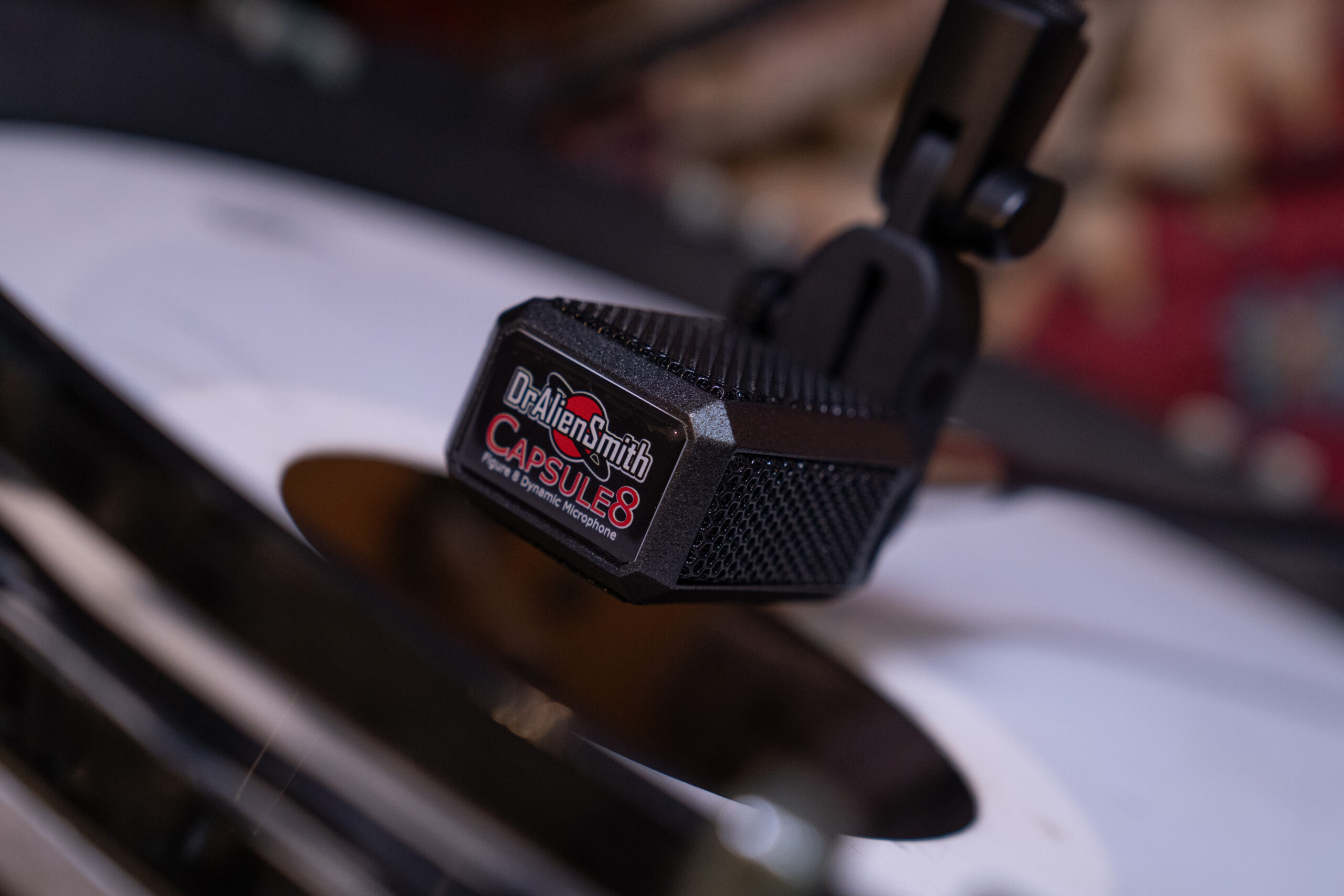The ribbon mic’s reputation for recording acoustic instruments is much lauded. We especially wanted to see how the R-121 performed on acoustic guitar, mainly to see how well it represented a complex envelope…
The Royer R-121 is a ribbon mic, which operates differently to a condenser mic and somewhat similarly to a dynamic mic. The ribbon’s method of electromagnetic induction is the same as a dynamic in that the physical motion of its components creates its output current but instead of the dynamic’s heavier voice-coil, the ribbon uses an extremely thin piece of corrugated aluminium.
This means that the mic is incredibly sensitive; capturing sounds with remarkable realism. Here we take a look at recording acoustic guitar with the Royer 121 microphone.

Royer is a relatively new microphone company (established in 1998), but what they strive to achieve is a sound beyond their years. Ribbons were the early pioneers of the microphone world – RCA popularised ribbon mics as far back as the early 1930s.
Gradually though, condenser mics improved in quality, dynamics also achieved technological advances while proving to be robust enough to withstand the rigours of the road and the studio. Ribbons slightly fell out of favour, due in large part to their fragility and their expense. Yet contemporary manufacturers like Royer and AEA are reviving interest in the old-school technology by building mics that are tougher, more versatile and great value for money.
The ribbon mic’s reputation for recording acoustic instruments is much lauded. I especially wanted to see how the R-121 performed on acoustic guitar, mainly to see how well it represented a complex envelope – the attack of the pick through the strings, the scratchiness of the fretting hand moving around the neck, the long decay of full chords.
Firstly I close-miked, with the diaphragm pointing toward the junction of the neck and bridge, about six inches away. This yielded a good response, especially in the bottom end, but not a noticeably superior one when compared with a high quality dynamic. When I backed off the mic position though, the R-121 came into a world of its own.
I tested again, about two feet away, and it offered a more balanced response, losing some of the close position “woofiness” and capturing a beautiful, rounded top-end. The further I backed off though, the better it became, and finally I was in an area that mirrored my standing position. As you might imagine, when I listened back, it sounded like the performance was happening right in front of me.
With this spacious mic position, the room sound must be taken into account. If you’re in a room with unwanted ambience, this setup will not be optimal. Close miking will reduce the spill from other sound sources, but I believe that the real magic of this microphone is in the way it performs in conjunction with the room, a good distance from the instrument.
The aforementioned fragility inherent in ribbon microphones is worth mentioning too. The aluminum strip is so thin that too much volume can break the ribbon. Sending phantom power to a ribbon can also break it. Yet the R-121 is very much part of the new breed of robust ribbons and can perform well on electric guitar cabinets, brass and even drum overheads.
The Royer R-121 isn’t the ultimate mic for all solutions. If you have the right room and the right acoustic sound, however, you’d be hard-pressed to find a mic that can capture a performance with as much fidelity or precision.


